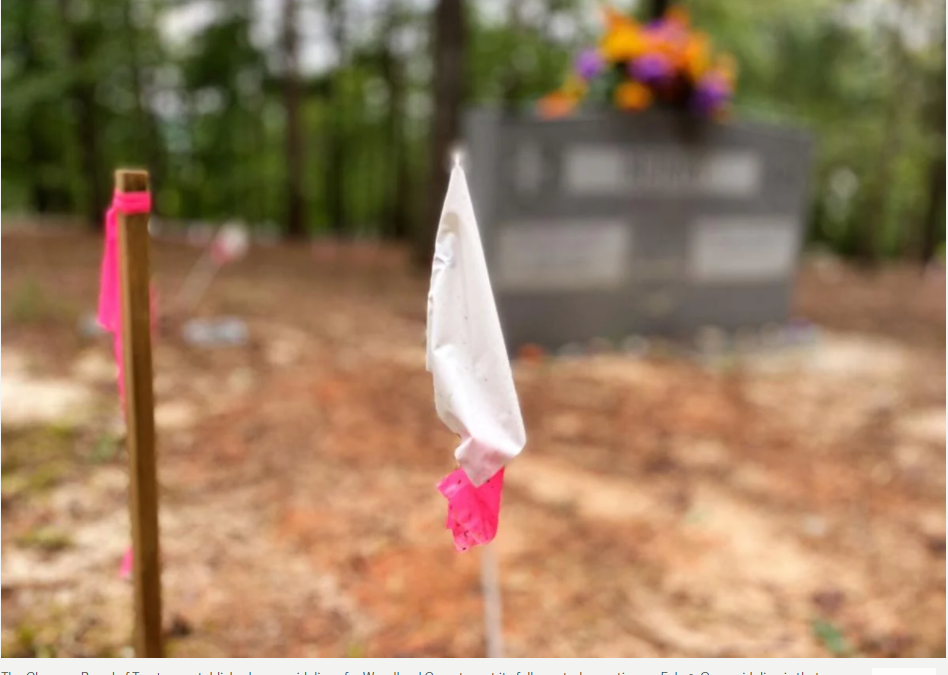SOUTH CAROLINA: Clemson Board Explores Historic Woodland Cemetery Update
CLEMSON — As the saga of preserving and honoring hundreds of unmarked graves at Woodland Cemetery continues to unfold, Clemson University is examining options for beautification and expanding burial options while setting new guidelines.
During a Feb. 2 quarterly full meeting, the Clemson Board of Trustees approved exploring the potential for a memorial garden and accessible pathways inside the cemetery. There is also a potential for burial updates, like the addition of a columbarium or a sepulchral building that has niches for urns, and an expansion at New Street that could add some in-ground burial options and border walls.
Established in 1924, Woodland has permitted university trustees, presidents and longtime employees to be buried free of charge. Research done using ground-penetrating radar technology over the past year and a half revealed at least 660, and likely more, unmarked graves of enslaved people and indentured workers. Woodland, not far from Memorial Stadium and historically part of John C. Calhoun’s Fort Hill plantation, falls under the jurisdiction of Clemson’s board.
The board approved a list of guiding principles for the graveyard. All existing burials will not be disturbed as the university continues its work of honoring and respecting all graves. Spouses of those already buried will have the option to be buried there. Burials of already deceased eligible persons can move forward. If an existing plot is no longer usable, the board office will identify a new location.Finally, the board office will inform everyone eligible that future burial options at Woodland may be limited.
“They need to go ahead and make sure they work with their families now while they have that opportunity to talk about their desires for internment and suitable burial options,” interim Board Office Executive Secretary Chip Hood told the board during the virtual meeting.
The board office will assess how many currently eligible people want to be buried at Woodland. Reservations for the cemetery are still suspended.
Similar preservation efforts influenced by Woodland are seeping into other properties owned by the university. As of December, Clemson was working with local historians to identify and preserve graveyards on at least five of its sites away from the main campus.
Other than the short update on the Woodland project, the hourlong board meeting included committee reports, a presentation from university President Jim Clements and the approval of 10 action items pertaining to facilities and finances.
Tony Wagner, executive vice president for Finance and Operations, gave a two- to three-sentence summary of each of the items, some of which are ongoing projects and others that are in their infancy. Each item was discussed at length during the board’s finance and facilities subcommittee.
The 10 items approved on Feb. 2 are:
- A $750,000 request to begin the design process to replace Lehotsky Hall. The total cost of the project is estimated at $50 million and will be funded by state institution bonds. Construction is set to begin July 2023 and completed December 2024.
- Approval for $500,000 to establish a project design budget and construct new facilities for gymnastics and lacrosse. Gifts and athletic revenue bonds totaling approximately $27.5 million will fund the project set to begin in February 2023 with completion in January 2024.
- A $230,000 request to establish a project design budget for the renovation of Tillman Hall auditorium. Full renovation is estimated at $11.5 million, funded by maintenance and stewardship funds. Construction will begin in July 2023 and be completed in July 2024.
- The fourth action item included five subsection items for projects with budgets less than $5 million. The board approved the funds for an entrepreneurship accelerator program; south campus stormwater and landscaping improvements; Hunnicutt Creek restoration; intersection improvements at Old Stone Church, Cherry Road and West Cherry Road; and finally, R-10 parking lot construction.
- $56 million for the development and alumni center building. The project will be funded by gifts and state institution bonds. Construction is set to begin this November and be completed in March 2024.
- The adoption of a resolution requesting the issuance of state institution bonds in the aggregate amount of $45 million. The resolution requests that the state issues these bonds on behalf of Clemson.
- Approval to update parking and public safety regulations.
- A land swap between Duck Creek Farms and the university where Clemson will acquire 0.373 acres adjacent to the university’s Experimental Forest, which falls across Oconee, Pickens and Anderson counties. The university will exchange approximately 1.5 acres that is adjacent to the larger parent track of the farm. Duck Creek Farm will pay Clemson the value difference of the two properties.
- A land exchange with the Army Corps of Engineers to acquire approximately 1.25 acres adjacent to the area identified for the new lacrosse field in the rowing, lacrosse and gymnastics district. The university will exchange 1.31 acres it owns along S.C. Highway 93, across from the entrance to the Snow Family Outdoor Fitness and Wellness Center. Both land swaps aim to clean up the boundaries of Clemson property.
- Approval to allow university staff to apprise and conduct building and environmental assessments on a proposed property acquisition of programmatic space that has been offered to the university. Details regarding the acquisition and how the deal will be structured have yet to be finalized. Phase two approval will be brought to the board at a later date.
The university is also finalizing its search for a new CEO for the Clemson University Foundation, an independent, nonprofit that promotes the future development of the university. The foundation oversees the university’s endowment, which recently surpassed $1 billion, and also supplements the remainder of the president’s salary not funded by the state, which for Clements is on track to exceed $1 million by the end of his contract’s term.
–postandcourier.com



